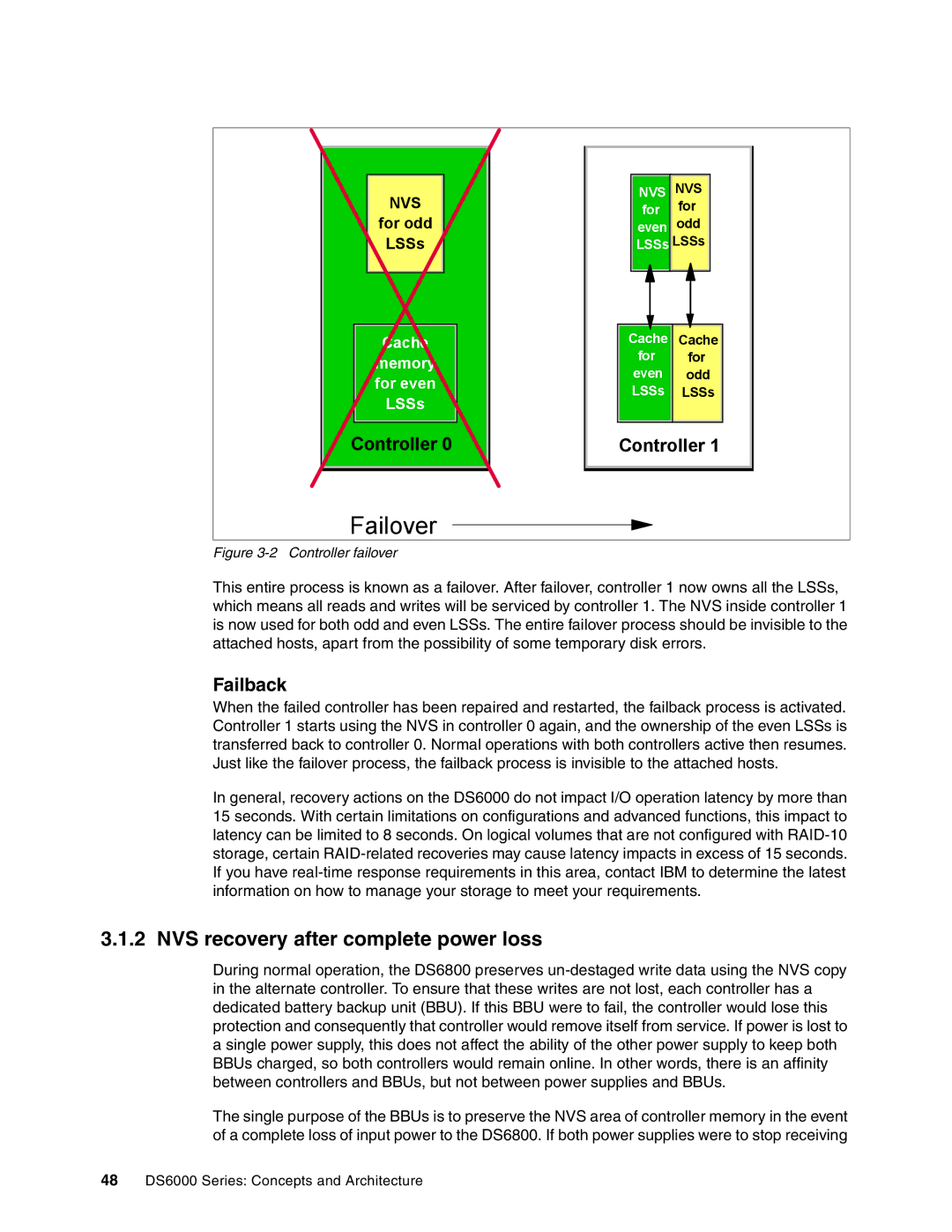
NVS
for odd LSSs
Cache
memory for even LSSs
Controller 0
NVS NVS for for even odd LSSs LSSs
Cache Cache
for for
even odd
LSSs LSSs
Controller 1
Failover
Figure 3-2 Controller failover
This entire process is known as a failover. After failover, controller 1 now owns all the LSSs, which means all reads and writes will be serviced by controller 1. The NVS inside controller 1 is now used for both odd and even LSSs. The entire failover process should be invisible to the attached hosts, apart from the possibility of some temporary disk errors.
Failback
When the failed controller has been repaired and restarted, the failback process is activated. Controller 1 starts using the NVS in controller 0 again, and the ownership of the even LSSs is transferred back to controller 0. Normal operations with both controllers active then resumes. Just like the failover process, the failback process is invisible to the attached hosts.
In general, recovery actions on the DS6000 do not impact I/O operation latency by more than 15 seconds. With certain limitations on configurations and advanced functions, this impact to latency can be limited to 8 seconds. On logical volumes that are not configured with
3.1.2 NVS recovery after complete power loss
During normal operation, the DS6800 preserves
The single purpose of the BBUs is to preserve the NVS area of controller memory in the event of a complete loss of input power to the DS6800. If both power supplies were to stop receiving
48DS6000 Series: Concepts and Architecture
